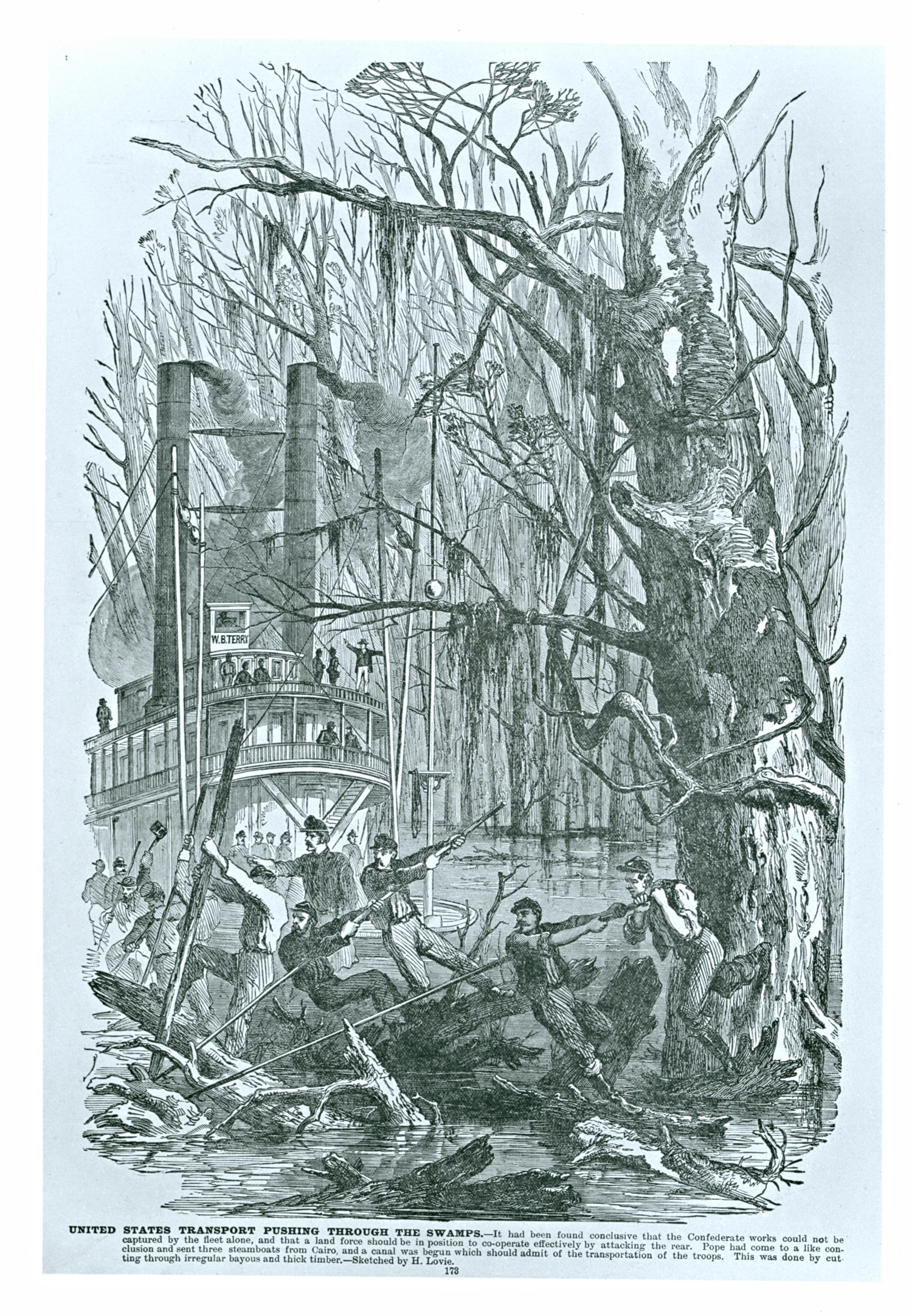The American Civil War: Innovations in Transportation
Many historians have called the U.S. Civil War "the first modern war." Its impact and later repercussions have been analyzed from countless angles-- from the point of view of weaponry, individual battles, strategy, its officers, its social impact. . . This exhibition examines the Civil War from the point of view of transportation-- by rail, ship and wagon.
The majority of the prints in the exhibit have been selected from The Soldier in Our Civil War, a series issued in sixteen weekly portfolios, that were printed from the original woodcuts commissioned by Frank Leslie and used as illustrations for Frank Leslie's Illustrated Newspaper from 1861 and 1865. Leslie sent out about 20 artists during the war, one to be connected with each Department of the Army. These illustrations furnished a remarkable realistic view of the main events, as well as insight into the experiences of the common soldiers. Over 30 prints and accompanying descriptive text panels show how important the railroads and warships were to the final outcome of the Civil War. There were striking technological advances curing this period, and the innovations developed for transporting supplies and troops, and the use of new forms of transport were to have great influence on the later development of railroads and war ships. Prior to the Civil War, railroads had never been used on an ambitious saale before to transport and supply armies in the field, and some authorities doubted that it could be done. But the Union was able to rebuild the existing system and create an efficient transportation network. The Army's Construction Corps performed extraordinary feats of bridge reconstruction and keeping supply lines open. In fact, without the railroads the outcome of the war might have been different and certainly General Sherman's Atlanta campaign would have been impossible.
Steam and ironclad warships were common, and revolutionized warfare on the water. Southerners were not known as seafaring people, yet they built the first submarine to sink an enemy vessel in combat. They also equipped one of the first successful iron warships. This fascinating exhibition shows the fabled battle between the Monitor and the Merrimac, the hardships of trying to supply the troops by wagon-train, the horrifying collapse of a railroad bridge, and the efforts of the north to blockade Southern ports.




